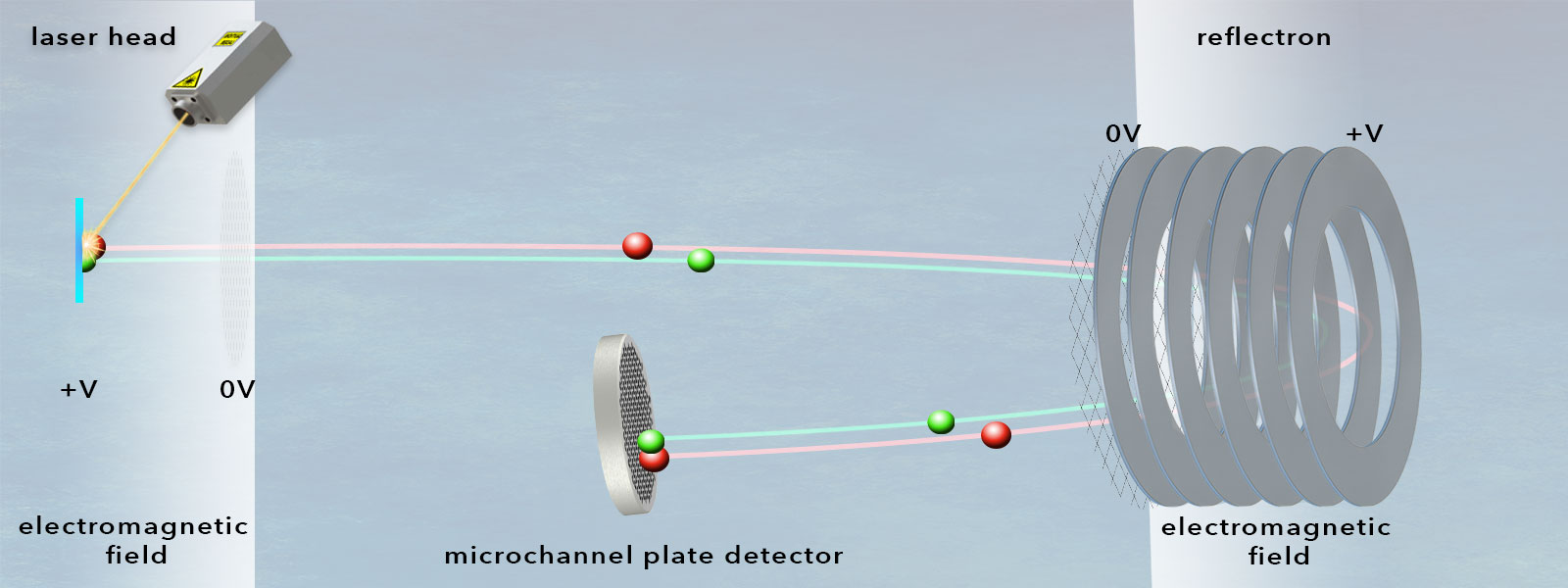reflectron
mass reflectron
A reflectron is used to improve the mass resolution in a mass spectrometer. It is used to reverse the direction of the ions by creating an electric field with a gradient. The field decelerates the ions and then accelerates them again in the opposite direction. This reduces the influence of their kinetic energy distribution on the flight time, because the ions with higher kinetic energy penetrate deeper into the electrical field of the reflector and cover a correspondingly longer distance, which largely compensates for the flight time differences.
The background to this feature is, that it is technically not exactly easy to ensure in a mass spectrometer that all ions really absorb the same amount of energy. During the measurement, the sample is in a gaseous state, which means that the energy distribution of the gas particles within the ion source follows a Boltzmann distribution. During the acceleration phase, different parts of the sample are therefore exposed to the electric field to a greater or lesser extent than others. As a result, they do not consume the same amount of energy, which would, however, be a prerequisite for correct measurements. Therefore a deviation occurs and particles with the same mass-to-charge ratio are nevertheless accelerated to different speeds. These ions have different kinetic energies and this energy dispersion acts as a blurring in the mass spectrum. The energy dispersion can be minimized with the help of a reflector.
See graphic below:

The single-stage reflector uses a homogeneous field and can compensate for small energy fluctuations in the ions leaving the ion source. In the reflection by means of such an ion mirror, the more energetic ion (red) travels a longer distance but arrives at the detector at the same time as the lower-energy ion (green) of the same mass. (© cronologic GMBH & Co. KG)
